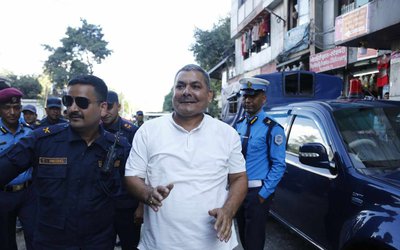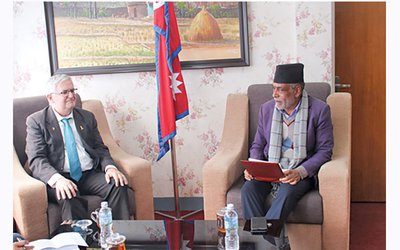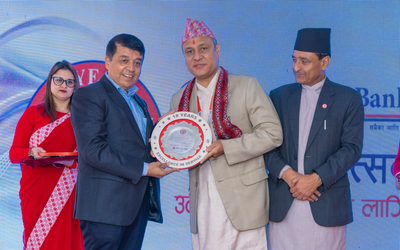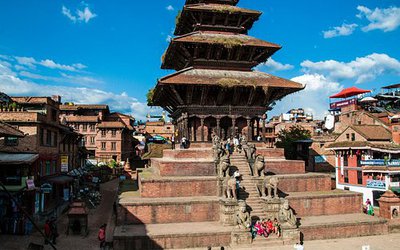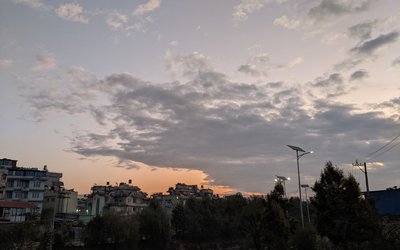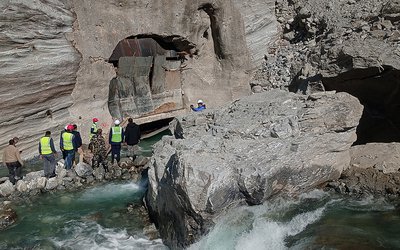
Minister for Labor, Employment and Social Security and International Labor Organization Nepal organized a program on the World Day Against Child Labor. Richard Howard, Director ILO Nepal, and other senior government officials addressed the program stressing the need to end the child labor.
Minister for Labor, Employment and Social Security Gokarna Bista also addressed the program.
As one of the most affected country of Child labor, Nepal government with support from ILO has been launching various programs against the child labor.
“Children are more vulnerable to risk than adults. Urgent action is needed to ensure no child under the age of 18 is in hazardous child labour,” says ILO Director-General Guy Ryder on the occasion of World Day against Child Labour.
On World Day Against Child Labour 2018, the spotlight is on ending hazardous child labour. It is a priority in the wider ILO campaigns against child labour and for safe and healthy work for youth of legal working age – “Generation Safe & Healthy.”
About 73 million children are in hazardous work – almost half of the 152 million children aged 5 to 17 still in child labour. These children are toiling in mines and fields, factories and homes, exposed to pesticides and other toxic substances, carrying heavy loads or working long hours. Many suffer lifelong physical and psychological consequences. Their very lives can be at risk.
”No child under the age of 18 should perform
hazardous work as stipulated in the ILO’s Conventions on child labour, namely
the Minimum Age Convention, 1973 (No. 138)
and the Worst Forms of Child Labour Convention, 1999 (No. 182) . They
require governments, in consultation with the social partners, to establish and
enforce a national list of hazardous work prohibited for children. Ratification
of these Conventions by 171 and 181 ILO member States respectively - close to
universal ratification – reflects a commitment to end child labour in all its
forms. It is time to step up action,” said ILO director.
A new ILO report, Towards the Urgent Elimination of Hazardous Child Labour , finds that certain occupational hazards, including exposure to psychological stress and to commonly-used chemicals, are even more serious for children than previously thought.
Another key finding is that adolescence, as a period of physical maturation, may start earlier and last into the mid-twenties. Within this extended period of growth, children (and young adults), face a range of vulnerabilities that require responses in law and practice.
The report outlines the crucial and mutual link between education and health: lack of education increases the risk of negative health outcomes from work and conversely, quality education has positive and protective effects on health.
Although the overall number of children in hazardous work has decreased over the past years, progress has been limited to older children in hazardous work. Between 2012 and 2016, there was almost no reduction in the number of children aged 5 to 11 in child labour, and the number of these most vulnerable, youngest children in hazardous work actually increased. This is unacceptable.
The 2030 Sustainable Development Agenda reaffirms the urgency of eliminating the worst forms of child labour, which includes hazardous work, the need to promote safe and secure working environments for all workers, and sets the target of ending all forms of child labour by 2025. If we are to keep the solemn promises we have made to the world’s children, we must, once and for all, “turn off the tap” and stop children from entering child labour in the first place many of whom, especially in agriculture, commonly start when they are six, seven or eight years old.
- Agriculture Minister Thanks Israel Government For Its support In Agriculture sector
- Jan 03, 2025
- Global IME Bank's 18th Anniversary: Chairman Dhakal's Emphasis On Expanding Secure Digital Banking Services
- Jan 03, 2025
- Nepal Received Over 1.1 Million Tourists In 2024
- Jan 03, 2025
- Weather Forecast: Mainly Patly Cloudy In Kathmandu Valley And Mainly Fair In The Rest Of Nepal
- Jan 03, 2025
- Melamchi Water Will Be Distributed Round The Year: Minister Yadav
- Jan 02, 2025




